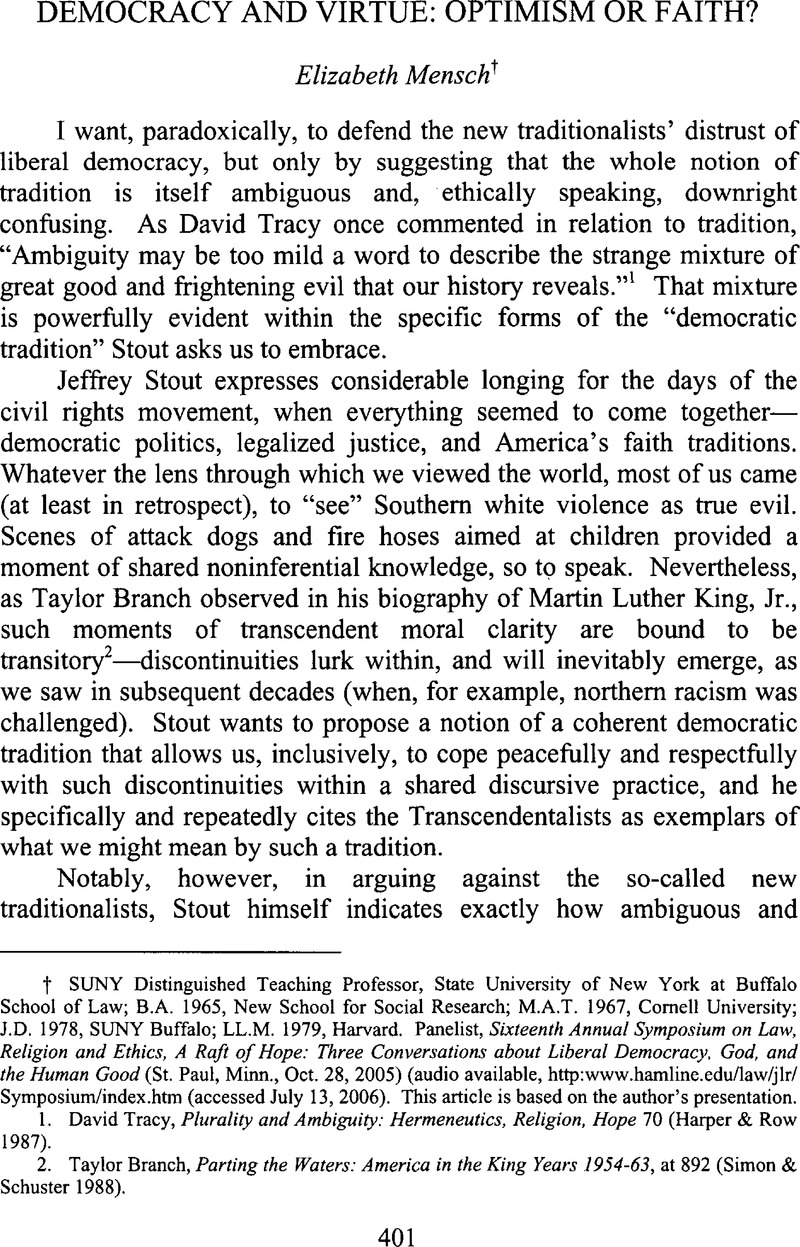Article contents
Democracy and Virtue: Optimism or Faith?
Published online by Cambridge University Press: 24 April 2015
Abstract

- Type
- Law, Religion and Ethics Symposium
- Information
- Copyright
- Copyright © Center for the Study of Law and Religion at Emory University 2005
References
1. Tracy, David, Plurality and Ambiguity: Hermeneutics, Religion, Hope 70 (Harper & Row 1987)Google Scholar.
2. Branch, Taylor, Parting the Waters: America in the King Years 1954-63, at 892 (Simon & Schuster 1988)Google Scholar.
3. For a recent meditation on the centrality of that parable, and its importance in relation specifically to abolitionism and to 19th-century Calvinism generally, see Robinson, Marilynne, Gilead (Farrar, Straus & Giroux 2004)Google Scholar.
4. Reynolds, David S., John Brown, Abolitionist: The Man Who Killed Slavery, Sparked The Civil War, and Seeded Civil Rights 19 (Alfred A. Knopf 2005)Google Scholar.
5. Id. at 220 (quoting The Journals and Miscellaneous Notebooks of Ralph Waldo Emerson vol. 12, 152 (Allart, Linda ed., Harv. U. Press 1976)Google Scholar.
6. Id. (quoting The Journal of Henry D. Thoreau vol. 10, 252 (Torrey, Bradford & Allen, Francis H. ed., Dover 1962)Google Scholar).
7. Id. (quoting The Journal of Henry D. Thoreau, supra, n. 6, at vol. 1, 446).
8. Id. at 220-221 (quoting The Collected Poems of Henry Thoreau 134–135 (Johns Hopkins U. Press 1964)Google Scholar.
9. Id. at 25, 48. For Brown's explicit use in relation to abolitionism, see id. at 151-152.
10. Id. at 432-433. See also id. at 406 for Emerson and Thoreau as opening the “floodgates to comparisons between Brown and Christ.”
11. Id. at 366.
12. Id. at 228. On the celebration of the Cromwell model, and of violence generally, see id. at 229-232.
13. Id. at 494.
- 1
- Cited by


